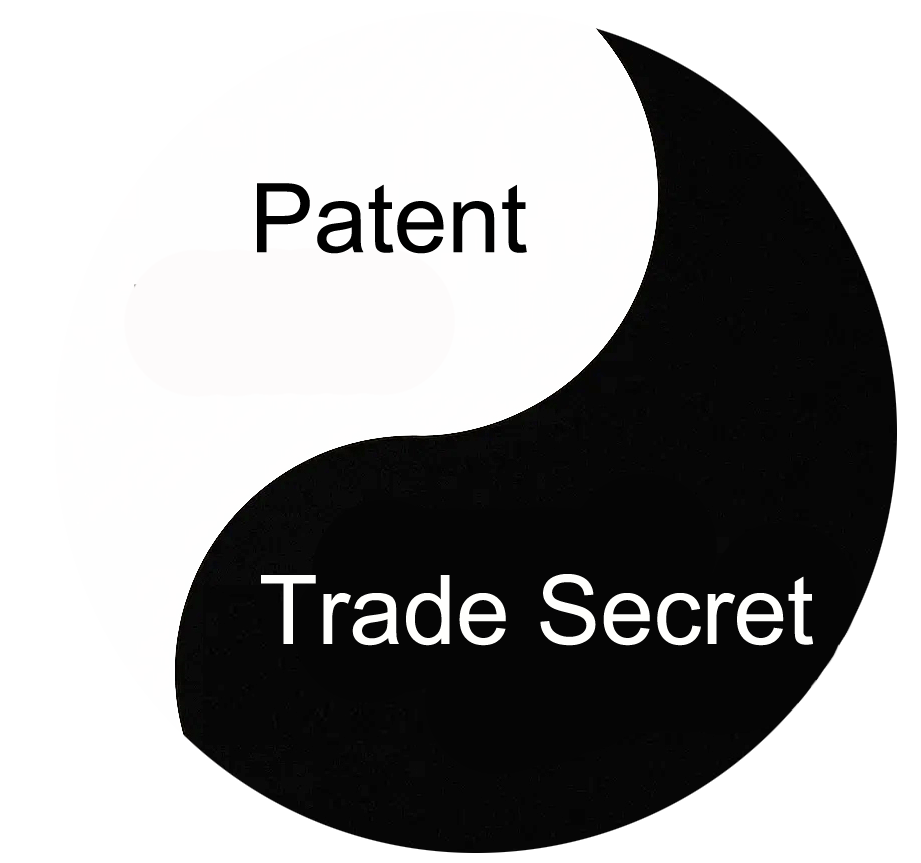Introduction:
By 2025, the wave of open-source large models has swept the globe, with DeepSeek emerging as one of the most dazzling stars. This Chinese tech company not only rapidly iterates and upgrades its models but also embraces open-source principles, earning widespread acclaim from the developer community.
However, little is known that behind its open-source facade, DeepSeek has quietly woven a robust intellectual property protection net. Open-source is its posture, patents are its sword, and trade secrets are its hidden trump card.
Today, we delve into the pros and cons of patent protection versus trade secret protection and introduce a groundbreaking "Four-Factor Decision Framework" to help SMEs navigate the complexities of tech protection. Master this "art of offense and defense" to maximize the value of every innovation!
The SME Dilemma: Can You Have Your Cake and Eat It Too?
SMEs on the path of technological innovation often face a "happy problem":
"I want my technology to gain the prestige of a patent while retaining the confidentiality of a trade secret. Can I really have both?"
In reality, SMEs grapple with tough choices:
l Patents: Costly yet powerful – High application and maintenance fees, lengthy approval cycles, and operational burdens for survival-focused SMEs.
l Trade secrets: Risky but flexible – Seemingly cost-free, but fragile protection. Once leaked, losses could be catastrophic. SMEs often lack robust management systems and weak confidentiality awareness.
l The disclosure dilemma– Patents require public disclosure, potentially aiding competitors. Trade secrets risk inadequate protection, leading to wasted efforts.
So, how can SMEs break free? Should they bet on patents, rely on secrecy, or find a smarter middle ground?
I. Patent vs. Trade Secret: A Deep Comparison
1. Patent Protection: A Double-Edged Sword
l Core advantages: Exclusive rights, market leverage, monetization potential, brand credibility, and funding opportunities.
l Drawbacks: High costs, limited duration, public disclosure, approval risks, and enforcement challenges.
2. Trade Secret Protection: Invisible Yet Potent
l Core advantages: Low cost, indefinite duration, and no disclosure.
l Drawbacks: Vulnerability, enforcement difficulties, and susceptibility to reverse engineering.
II. The Four-Factor Decision Framework: A Compass for SMEs
To choose between patents and trade secrets, we present the Four-Factor Decision Framework, guiding SMEs through the maze of tech protection:
Core Philosophy: Evaluate technologies based on four pillars—Criticality, Reverse Engineering Risk, Detectability, and Confidentiality Capability—to determine the optimal strategy.
1. Criticality: How Vital Is Your Technology?
l Key questions:
Is this technology your competitive edge?
Does it offer significant market advantages?
Must competitors master it to compete?
Would losing it cause severe harm?
l Guideline: The more critical the tech, the stronger the case for patents.
2. Reverse Engineering Risk: Can Your Tech Be Cracked?
l Key questions:
Can competitors reverse-engineer your tech via product disassembly, code analysis, or research?
If reverse-engineered, would trade secret protection collapse? Do you have backup plans?
Can contracts restrict competitors’ reverse engineering?
l Guideline: Easily reverse-engineered tech leans toward patent protection.
3. Detectability: Can Infringement Be Spotted?
l Key questions:
Can you detect unauthorized use by competitors?
Can you gather evidence of infringement?
If detection is hard, will patent enforcement fail?
l Guideline: Easily detectable infringement strengthens patent deterrence.
4. Confidentiality Capability: Can You Keep Secrets?
l Key questions:
Do you have robust confidentiality protocols?
Are employees aware of secrecy protocols?
Can you limit access to sensitive tech?
Do suppliers/partners need tech details?
l Guideline: Strong confidentiality favors trade secrets.
Implementation Steps:
1. Tech Inventory: List all core technologies.
2. Factor Scoring: Rate each tech across the four factors.
3. Weighted Analysis: Calculate composite scores.
4. Strategy Mapping: Classify tech into "Patent Priority", "Trade Secret Priority", or "Hybrid Protection".
5. Dynamic Updates: Regularly adjust strategies based on market shifts and tech evolution.
III. Case Studies
Case 1: Protecting Software Algorithms (Software Industry)
Company Background: A startup specializing in image-processing software relies on a proprietary algorithm that significantly enhances processing speed and quality.
Protection Strategy: A hybrid approach combining patents and trade secrets:
Patent Protection: File invention patents for the algorithm’s core principles (e.g., foundational logic, key steps) to build technical barriers and deter competitors.
Trade Secret Protection: Safeguard optimization details (e.g., parameter tuning, code implementation techniques) as trade secrets to deepen and broaden the technology’s competitive moat.
Rationale:
Software algorithms are high-value assets but vulnerable to reverse engineering (via code analysis), making patent protection essential. However, optimization details are difficult to reverse-engineer and guarded by a tightly controlled R&D team, which are better protected as trade secrets. This dual strategy creates a layered defense, ensuring both immediate legal deterrence and long-term secrecy.
Case 2: Safeguarding Manufacturing Processes (Manufacturing)
Company Background: A traditional manufacturer developed a proprietary process for producing a novel material, drastically reducing costs and improving product performance.
Protection Strategy: Prioritize trade secrets, supplemented by patents:
Trade Secret Protection: Implement comprehensive safeguards for core processes (e.g., key formulas, process know-how, and operating procedures), including: physical isolation, strict access controls, employee training and confidentiality agreements, etc.
Patent Protection: File utility model or invention patents for non-core but innovative elements, such as production equipment designs or auxiliary process steps, to create a peripheral defense.
Rationale:
Manufacturing processes are inherently difficult to reverse-engineer (due to hidden production steps) and carry immense secrecy value (e.g., formula leaks could be catastrophic). Thus, trade secrets form the primary shield. Patents on auxiliary innovations act as secondary safeguards, blocking competitors from mimicking equipment or refining similar processes.
IV. Conclusion: Strategize to Maximize Innovation Value
Patent protection is an open "yang" strategy—transparent and versatile. Trade secrets are the hidden "yin" strategy—flexible and subtle. For SMEs, the pinnacle of tech protection isn’t an either-or choice but a harmonious blend of both, creating a complementary, dynamic shield.
May this guide empower you to make informed decisions, safeguarding your innovations and unlocking their full potential!



